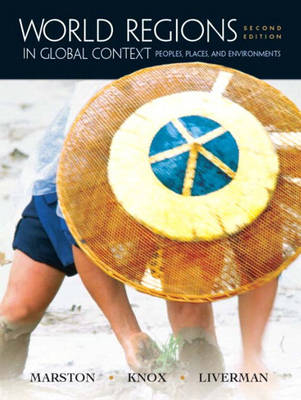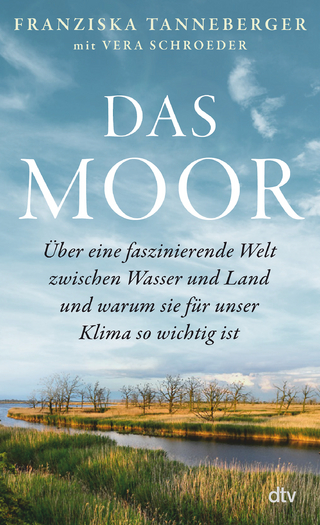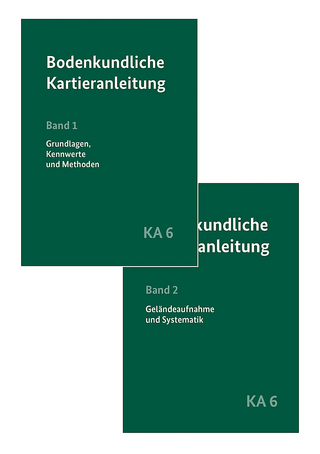
World Regions in Global Context
Pearson (Verlag)
978-0-13-144975-6 (ISBN)
- Titel erscheint in neuer Auflage
- Artikel merken
For courses in World Regional Geography.
For courses in World Regional Geography. World Regions in Global Context employs an explicitly global approach to world regional geography that emphasizes global connections, the stories behind the maps, and presents explicit discussions of how these forces and processes play themselves out in individual places. The book makes the most current and powerful ideas in geography accessible to the introductory student. Marston, Knox, and Liverman feature an emphasis on core regions, key cities, and distinctive landscapes that allows the them to stress global connections while still maintaining the course's traditional focus on places at the local scale.
Sallie A. Marston received her Ph.D. in Geography from the University of Colorado, Boulder. She has been a faculty member at the University of Arizona since 1986. Her teaching focuses on the historical, social, and cultural aspects of American urbanization, with particular emphasis on race, class, gender, and ethnicity issues. She received the College of Social and Behavioral Sciences Outstanding Teaching Award in 1989. She is the author of numerous journal articles and book chapters and serves on the editorial board of several scientific journals. In 1994/1995 she served as interim director of Women's Studies and the Southwest Institute for Research on Women. She is currently a professor in the Department of Geography and Regional Development at the University of Arizona. Paul L. Knox received his Ph.D. in Geography from the University of Sheffield, England. After teaching in the United Kingdom for several years, he moved to the United States to take a position as professor of urban affairs and planning at Virginia Tech. His teaching centers on urban and regional development, with an emphasis on comparative study. He has written several books on aspects of economic geography, social geography, and urbanization. He serves on the editorial board of several scientific journals and is co-editor on a series of books on world cities. In 1996 he was appointed to the position of University Distinguished Professor at Virginia Tech, where he currently serves as Dean of the College of Architecture and Urban Studies and International Director of the Metropolitan Institute. Diana M. Liverman received her Ph.D. in Geography from the University of California, Los Angeles, and also studied at the University of Toronto, Canada, and University College Longon, England. Born in Accra, Ghana, she is currently the director of Oxford University's Environmental Change Institute, where she also holds Oxford University's first established Chair of Environmental Science. Previously, she was professor of geography and regional development and the director of the Center for Latin American Studies at the University of Arizona; in 1993 she received a teaching award from Pennsylvania State University. Her teaching focuses on global environmental issues and on Latin America, and she is an editor of the Journal of Latin American Geography. Diana has served on several national and international advisory committees dealing with enviornmental issues and has written recent journal articles and book chapters on such topics as natural disasters, climate change, and environmental policy in Mexico.
1. A World of Regions.
The Power of Geography:
A World of Regions: The Regional Approach. The Interdependence of Geographic Scales. Boundaries and Frontiers. Regionalism and Sectionalism.
Places and Regions in an Interdependent World: Globalization. Globalization and Environmental Change.
The Global Context: Some Important Patterns: Religion. Language. Population Distribution. Urbanization. Economic Development and Social Well-being.
2. The Foundations of World Regions.
The Changing World: The Earth System. The World-System.
Geographic Expansion, Integration, and Change: The Growth of Early Empires. The Geographic Foundations of the Modern World.
Organizing the Core: The Division of Labor. Standardizing Time, Space, Measure, Value, and Money. Forging National Identities and Constructing States. Controlling and Commodifying Nature. Developing Internal Infrastructures.
Organizing the Periphery: Imperialism and Colonialism: Imposing New Geographies on the World. An International Division of Labor. Political and Cultural Geographies. Exploration and Exploitation. Developing Internal Infrastructures.
Globalization and Economic Development: Deploying and Encountering Development. Five Key Factors of Globalization. Transnational Economic Integration.
3. Europe.
Environment and Society in Europe: Landforms and Landscapes. Climate. Environmental History.
Europe in the World-System: Trade and the Age of Discovery. Industrialization and Imperialism. Eastern Europe's Interlude of State Socialism.
The Peoples of Europe: The European Diaspora. Migration Within Europe. Recent Migration Streams. European Cultural Traditions. Culture and Ethnicity, Nations and States.
Contemporary Challenges in a Globalizing World: Growth, Deindustrialization, and Reinvestment. The European Union. The Reintegration of Eastern Europe.
Core Regions and Distinctive Landscapes: Europe's Golden Triangle. The Southern Crescent. Mediterranean Europe. Alpine Europe. Nordic Europe. The Danubian Plains.
4. The Russian Federation, Central Asia, and the Transcaucasus.
Environment and Society: Climate. Physiographic Regions. Natural Landscapes. Environmental History.
Russia, Central Asia, and the Transcaucasus in the World-System: Muscovy and the Russian Empire. The Soviet Empire. New Realities.
The Peoples of Russia, Central Asia, and the Transcaucasus: The Russian Diaspora and Migration Streams. Nationalisms.
Contemporary Challenges in a Globalizing World: Problems of Economic and Social Transformation. Gender and Inequality.
Core Regions and Distinctive Landscapes: The Central Region. The Volga Region. The Urals. The Tundra. Central Siberian Taiga. The Steppes. The Central Asian Deserts.
5. Middle East and North Africa.
Environment and Society in the Middle East and North Africa: Landforms and Landscapes. Climate. Environmental History.
The Middle East and North Africa in the World-System: Early Empires and Innovation. The Ottoman Empire, European Colonialism, and the Emergence of Modern States.
Peoples of the Middle East and North Africa: Religion. Culture and Society. Migration and the Middle Eastern and North African Diaspora.
Contemporary Challenges in a Globalizing World: New Political Geographies and Regional Conflicts. Economic Development and Social Inequality.
Core Regions and Distinctive Landscapes: The Oil States. The Maghreb. The Western Sahara.
6. Sub-Saharan Africa.
Environment and Society in Sub-Saharan Africa: Landforms and Landscapes. Climate. Environmental History. Environment and Conservation.
Sub-Saharan Africa in the World-System: Human Origins and Early African History. The Colonial Period in Africa. Independence. South African History and Apartheid. The Cold War and Africa. Development, Debt, and Foreign Aid.
Peoples of Sub-Saharan Africa: Population and Fertility. HIV/AIDS. Urbanization. Sub-Saharan African Diaspora. Religion. Language and Ethnicity. Culture.
Contemporary Challenges in a Globalizing World: Politics and Peace. Social and Economic Inequality. Land Tenure and Zimbabwe. Women and Development. Other Development Strategies.
Core Regions and Distinctive Landscapes: Southern Africa and Johannesburg. The West African Coast and the City of Lagos. Nairobi and the East African Highlands. The Sahel. The Horn of Africa. Madagascar.
7. The United States and Canada.
Environment and Society in the United States and Canada: Landforms and Landscapes. Climate. Environmental History.
The United States and Canada in the World-System: The Region before the Europeans. Colonization and Independence. The Legacy of Slavery in the United States. European Settlement of theUnited States and Canada. Urbanization, Industrialization, and Conflict. The Emergence of Consolidation of United States Hegemony.
Peoples of the United States and Canada: Immigration. Internal Migration in the United States and Canada. U.S. and Canadian Cultural Contributions.
Contemporary Challenges in a Globalizing World: The New Regional Economies. Restructuring the State. Wealth and Inequality. Environmental Challenges.
Core Regions and Distinctive Landscapes: Pacific Rim and the New Economy. Cascadia and Internationalism. The U.S. and Canadian Core. The Northern Frontier. The Plains and Prairies. The New West.
8. Latin America.
Environment and Society in Latin America: Landforms and Landscapes. Natural Disasters and Mineral Resources. Climate. Water Resources. Biogeography and Ecosystems. Environmental History.
Latin America in the World-system: The Colonial Experience in Latin America. Independence. U.S. Dominance, Latin American Revolutions, and the Cold War. Economic Development in the 20th Century.
The Peoples of Latin America: History and Composition of the Peoples of Latin America. Population Growth and Urbanization. Migration. The Latin American and Caribbean Diaspora. Language and Cultural Traditions. Gender Relations. Religion.
Contemporary Challenges in a Globalizing World: Transitions from Authoritarianism to Democracy. Green Revolution and Land Reform. Continuing Inequality between and within Countries of the Region. The Drug Economy.
Core Regions and Distinctive Landscapes: Central Mexico. Southeastern Brazil. Amazon Basin. The Andes. Caribbean Islands. Central America.
9. East Asia.
Environment and Society in East Asia: Landforms. Climate. Landscapes and Environmental History.
East Asia in the World-System: Ancient Empires. Japan's Revolutions. Revolutionary China. East Asia in Today's World.
The Peoples of East Asia: Crowding and Population Policy. Migrations and Diasporas. Ethnicity. Cultural Traditions.
Contemporary Challenges in a Globalizing World: Japan: Government, Industry, and Regional Development. China: Reform, Growth and Inequality. North Korea: Juche.
Core Regions and Distinctive Landscapes of East Asia: North China Plain. Central China. South China. Japan's Pacific Corridor. Taiwan. South Korea. Mongolia. The Tibetan Plateau.
10. Southeast Asia.
Environment and Society in Southeast Asia: Climate. Environmental History.
Southeast Asia in the World-System: European Colonialism in Southeast Asia. Independence and the Cold War. Economic Development and New Export Economies.
Peoples of Southeast Asia: Population and Fertility. Migration and the Southeast Asian Diaspora. Urbanization. Ethnicity, Language, and Cultural Traditions.
Contemporary Challenges in a Globalizing World: Social and Economic Inequality. Political Instability and Cooperation. Agricultural Development.
Core Regions and Distinctive Landscapes of Southeast Asia: Singapore and the Strait of Malacca. Bangkok and Central Thailand. Java, Jakarta and Jabotabek. Mekong Basin. Borneo, Sulawesi, and Irian Jaya.
11. South Asia.
Environment and Society in South Asia: Major Physiographic Regions. Climate. Environmental History.
South Asia in the World-System: Mughal India. British Imperialism. South Asia in Today's World.
The Peoples of South Asia: Urbanization. Population Policies. Diasporas. Cultural Traditions. Ethnicity and Nationalism.
Contemporary Challenges in a Globalizing World: Economic Transformation and Regional Change. Inequality and Gender. Environmental Issues.
Core Regions and Distinctive Landscapes: The Upper Ganga Plains. The Indus Plains. The Damodar Valley and Hooghlyside. Mumbai-Pune. The Mountain Rim. The Bengal Delta.
12. Australia, New Zealand, and the South Pacific.
Environment and Society in Australia, New Zealand, and the South Pacific: Landforms and Landscapes. Climate. Environmental History.
Australia, New Zealand, and the South Pacific in the World-System: European Exploration and Early Settlement. Colonial Economies. Political Independence and Economic Restructuring.
The Peoples of Australia, New Zealand, and the South Pacific: Migration and Ethnic Composition. Language and Religion. Culture and Society.
Contemporary Challenges in a Globalizing World: Political Stability. Poverty and Inequality. Indigenous Issues and Multiculturalism.
Core Regions and Distinctive Landscapes: Southeastern Australia. The Outback. The Islands of the Pacific. Antarctica.
13. Future Regional Geographies.
Globalization and the Future of Regions: Predicting the Future. The Globalization Debates.
Global Stratification, Regional Change: The Marginalized. The Elite. The Embattled. The Stratified World.
Sustainability and Regional Change: Resources and Development. Sustainable Development.
Adjusting to the Future: Globalizing Culture and Cultural Dissonance. Globalization, Transnational Governance, and the State. Regional Integration and Fragmentation.
| Erscheint lt. Verlag | 1.7.2004 |
|---|---|
| Sprache | englisch |
| Maße | 220 x 283 mm |
| Gewicht | 1578 g |
| Themenwelt | Naturwissenschaften ► Geowissenschaften ► Geografie / Kartografie |
| ISBN-10 | 0-13-144975-3 / 0131449753 |
| ISBN-13 | 978-0-13-144975-6 / 9780131449756 |
| Zustand | Neuware |
| Informationen gemäß Produktsicherheitsverordnung (GPSR) | |
| Haben Sie eine Frage zum Produkt? |
aus dem Bereich



